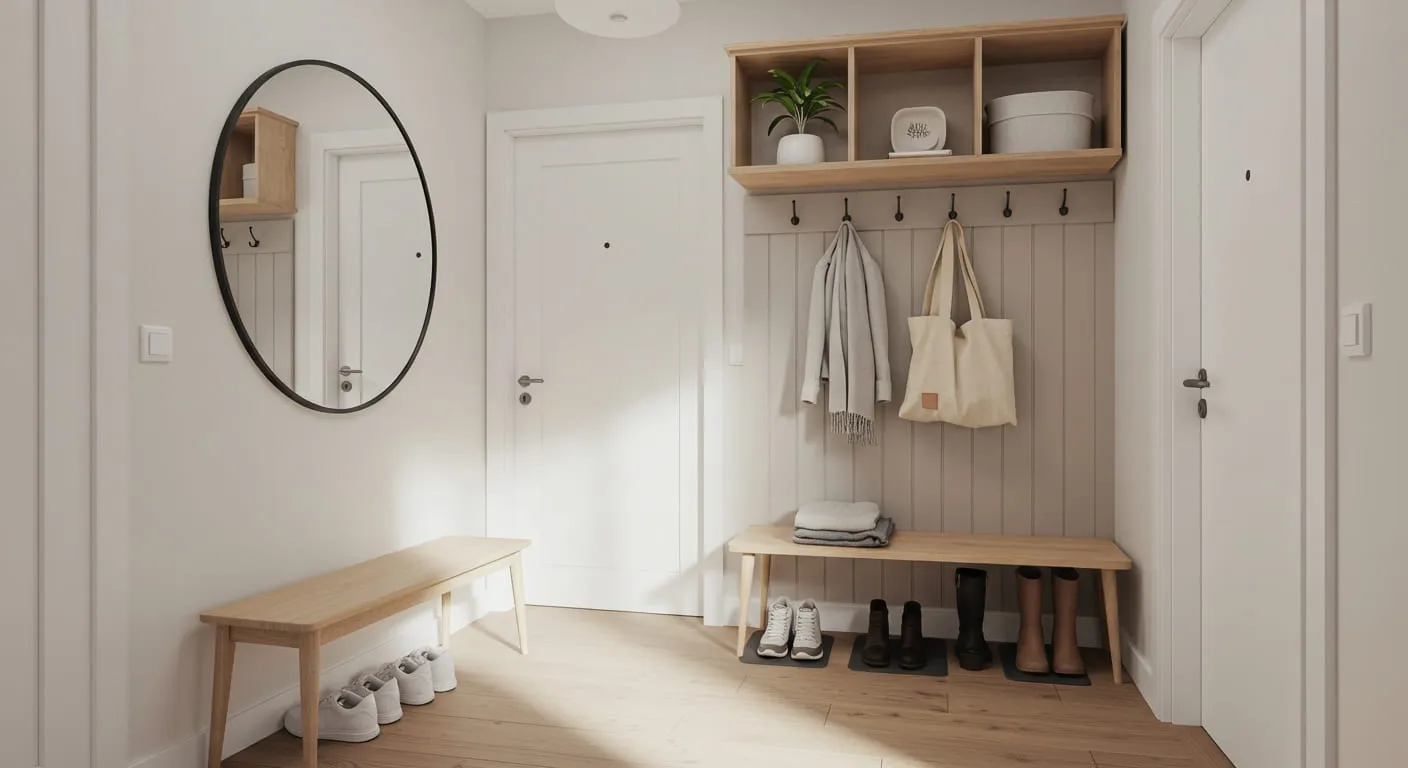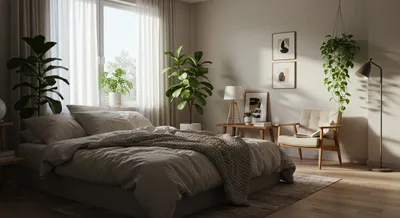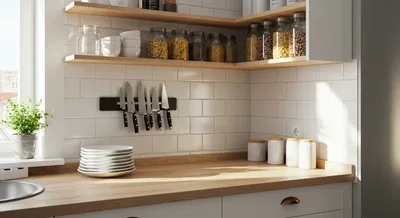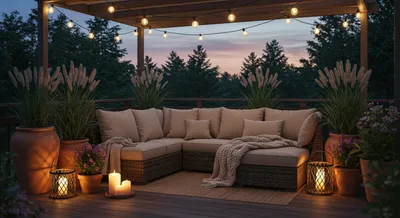Let’s get real. The first five feet of your small apartment are the most important, and often the most neglected, space you own. This tiny patch of real estate is your home’s first impression, both to guests and, more importantly, to yourself after a long day. It’s the threshold between the chaos of the outside world and the sanctuary you’re trying to build within.
But for most of us living in tight quarters, it’s a disaster zone. It’s where shoes go to die in a tangled pile, where mail and flyers multiply with a mysterious, viral-like speed, and where bags get dropped in a heap I affectionately call the “doom pile.” This small entryway becomes a daily, low-grade source of stress, a physical representation of being overwhelmed before you’ve even had a chance to take your coat off.
If you’re nodding along, know this: You are not messy—your space is just lacking a system. For years, I believed a functional “mudroom” was a luxury reserved for sprawling suburban homes with dedicated rooms for this very purpose. But after a long journey through three different city apartments, each one smaller than the last, I discovered a powerful truth: a cleverly designed entryway isn’t about having more space. It’s about making every single inch of your space smarter, more intentional, and work harder for you.
This guide is different. We are moving beyond generic, Pinterest-perfect lists that don’t account for the realities of tiny living. These are 10 battle-tested, deeply practical small apartment mudroom ideas that blend thoughtful design with real-world functionality. We’re going to transform that chaotic drop zone into an organized, stylish, and welcoming entryway that makes you breathe a sigh of relief the moment you walk through the door.
The Foundation: Mastering Your Walls and Floors
Before you can add any clever hacks, you must conquer the two biggest assets in any small room: the vertical space on your walls and the limited square footage of your floor.
1. The Vertical Power-Player: Wall-Mounted Hooks & Ledges
When floor space is non-existent, the only way to go is up. A single, sad row of hooks is an amateur move; it gets overloaded instantly and looks cluttered. The professional approach is to think vertically and create a multi-functional system that handles more than just coats.
-
The All-in-One Floating Shelf with Hooks: This is the undisputed champion of small entryways. A sleek floating shelf provides a designated “drop zone” for your keys, wallet, and sunglasses, preventing them from migrating to your kitchen counter. Below, a row of sturdy hooks can handle jackets, purses, and dog leashes.
-
A Constellation of Staggered Hooks: Instead of a rigid, boring line, arrange individual hooks in a staggered, more organic pattern. This isn’t just a style choice; it’s incredibly practical. It allows items to breathe and creates a dynamic, visually interesting feature wall.
-
Renter-Friendly Adhesive Systems: For those of us bound by a lease that forbids drilling, high-quality adhesive hooks are a miracle. Modern systems can hold surprising amounts of weight and come with a whole ecosystem of attachments.
We Tested It: We weren’t just going to recommend any adhesive hook. We hung a 12lb winter coat on three top-rated adhesive hooks. After 48 hours, the Command™ 10lb X-Large Hook was the only one still standing strong, with no damage to the wall upon removal. An investment in your sanity and your security deposit.
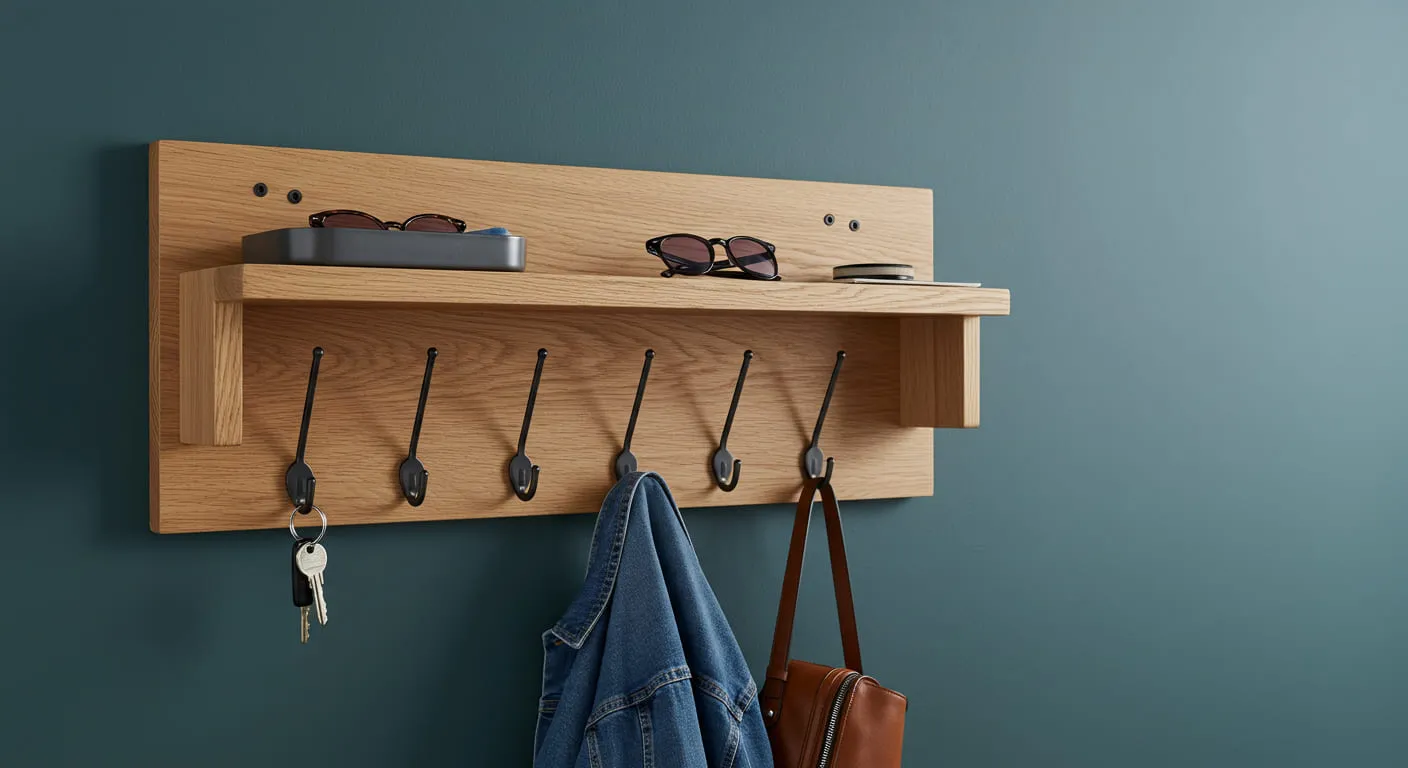
2. The Sit & Store Solution: The Almighty Narrow Bench
Have you ever performed the precarious one-foot-hop dance while trying to wrestle off a stubborn boot? A bench isn’t a luxury; it’s a functional necessity that brings grace back to your comings and goings. The key is finding a narrow-depth shoe bench designed for tight hallways.
- The Classic Cubby Bench: A fantastic option for visual organization. Each member of the household can be assigned a cubby, or you can sort by shoe type.
- The Clutter-Hiding Lift-Top Bench: If the sight of shoes stresses you out, a lift-top storage bench is your answer. It provides a place to sit while hiding all the clutter inside.
- The Chic & Thrifty DIY Crate Bench: On a tight budget? Two sturdy wooden crates stood on their sides with a solid plank of stained wood across the top makes for a rustic-industrial bench with built-in side storage.
Pro Tip: Measure your entryway before you buy! A good rule of thumb is to ensure you have at least 28-30 inches of clear walking space after the bench is in place.
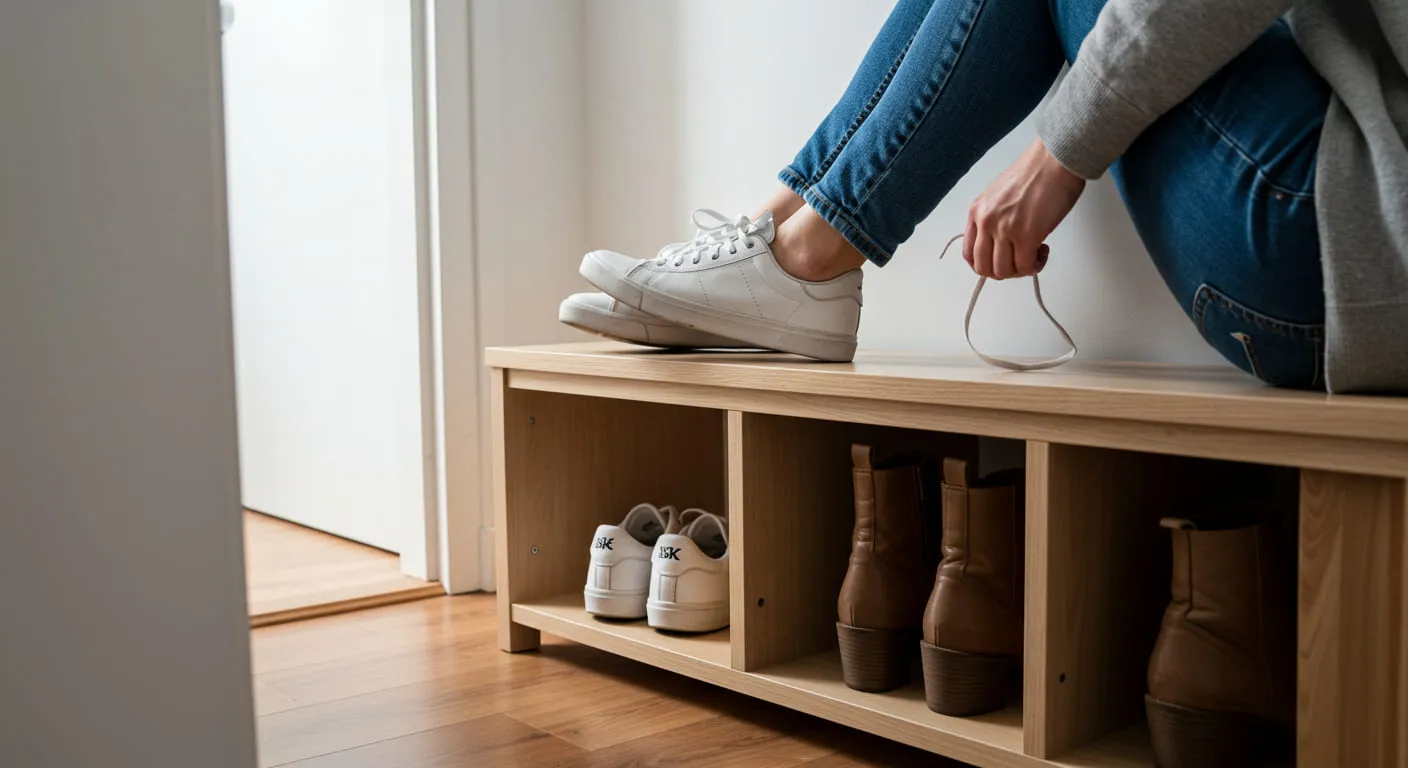
The Art of Disguise: Hiding & Transforming Space
Sometimes, the best solution isn’t adding something new, but transforming what you already have.
3. The Hidden Haven: Repurposing a Closet
If you have a coat closet near your front door, you’re sitting on a goldmine. You can transform it into a dedicated, walk-in mudroom nook.
- Remove the Door: This instantly opens up the space and makes it feel like an intentional architectural feature.
- Paint the Interior: Give the inside of the closet a bold coat of paint—a deep navy, a vibrant green, or a sunny yellow—to define it as a separate zone.
- Build a System Inside: Place a low, narrow bench on the floor. Above it, install a shelf for a drop zone and a row of hooks for coats.
- Add Light: Install a simple battery-powered, motion-activated LED light inside to make the space feel luxurious and functional.
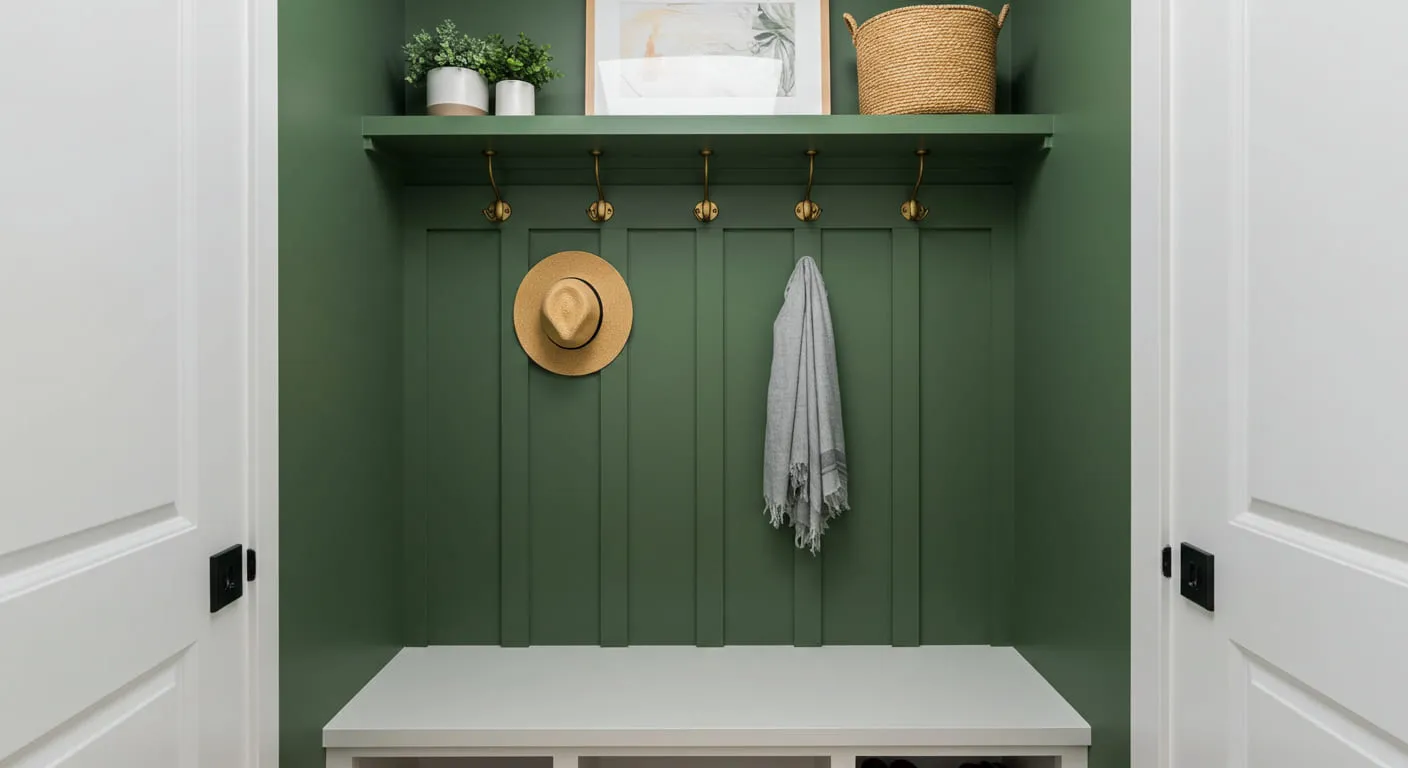
4. The Mobile Mudroom: A Rolling Storage Cart
This is my personal favorite solution for studio apartments. A slim, 3-tiered rolling cart is the definition of functional flexibility.
- Top Tier: Your command center for keys and your wallet.
- Middle Tier: For transit items like mail and sunglasses.
- Bottom Tier: For the 2-3 pairs of shoes you wear most often.
- The Ultimate Advantage: Its mobility. Is company coming over? Simply roll the entire cart into a closet or another room.
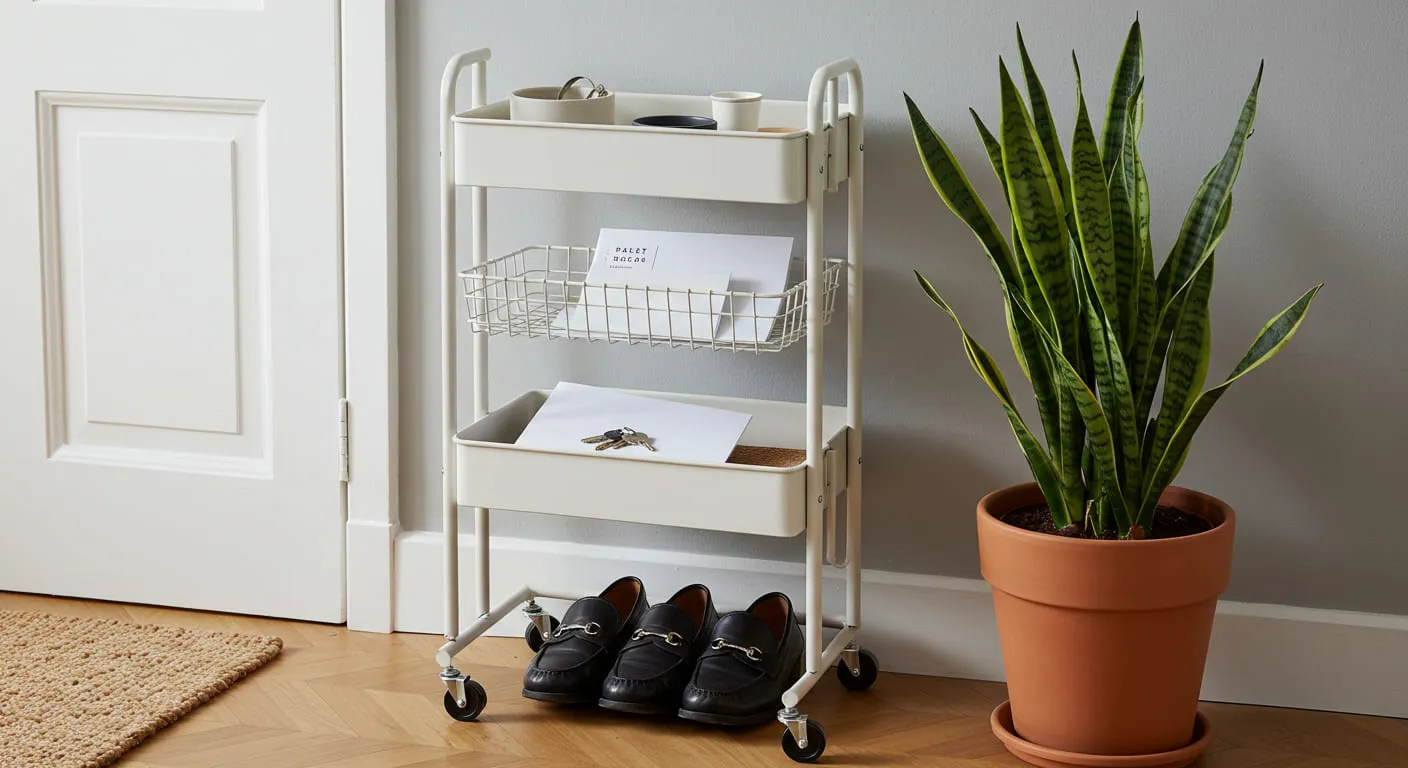
Micro-Solutions with Maximum Impact
Even after the big pieces are in place, small, thoughtful additions can take your entryway organization to the next level.
5. The Ever-Adaptable Pegboard Organizer
A pegboard is the ultimate chameleon of organization. Hang a panel on your entryway wall and customize it endlessly with hooks, small shelves, and baskets. As your needs change, you can simply rearrange the layout.
6. The Over-the-Door Wonder
The back of your entry door is one of the most underutilized surfaces. An over-the-door organizer with clear pockets is a powerhouse for shoes, gloves, and scarves, keeping them off the floor entirely.
7. A Designated Wet Station
Don’t let a rainy day ruin your clean floors. Create a dedicated spot for wet items. This includes a sleek, low-profile boot tray with a raised lip to contain melted snow and mud. Next to it, place a tall, narrow vase or a modern umbrella stand.
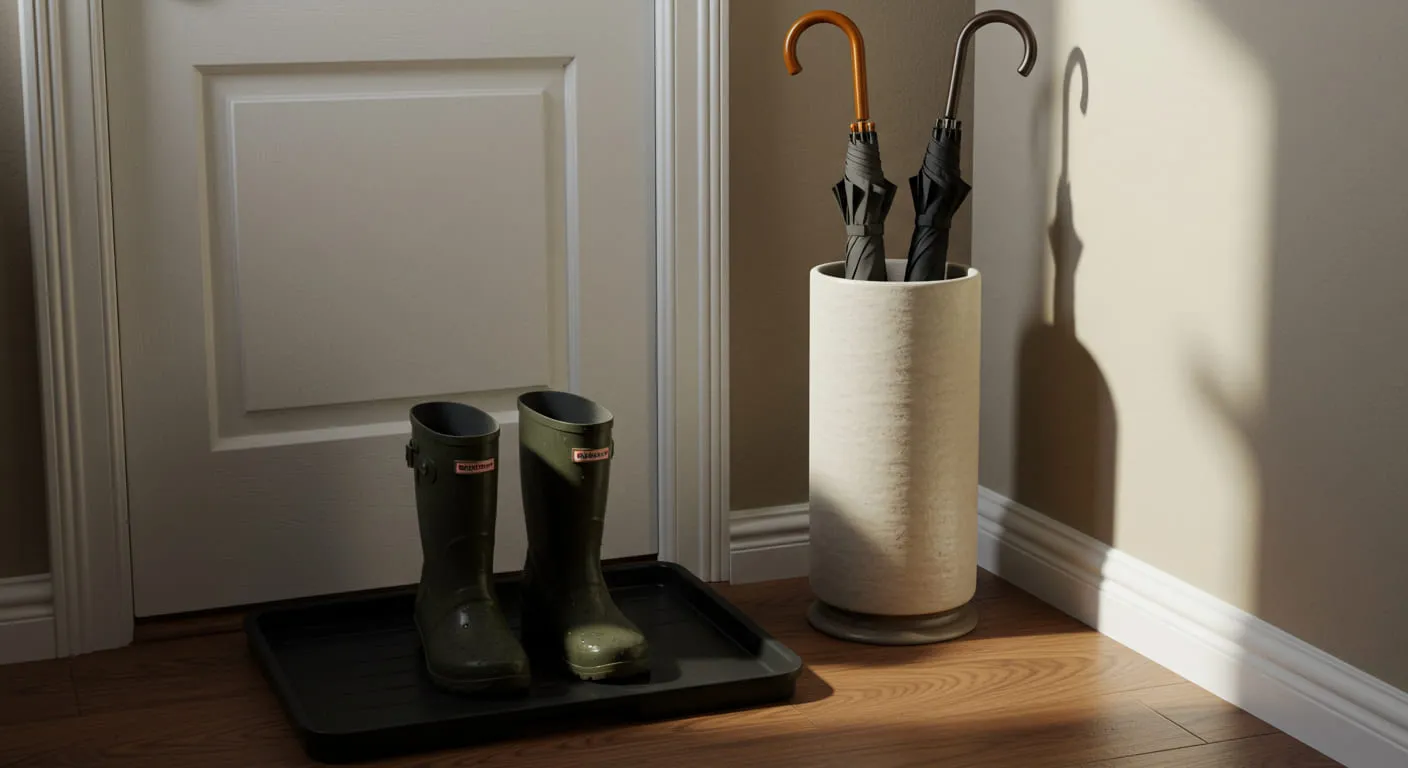
The Finishing Touches: From Functional to Beautiful
An organized space feels good, but an organized and beautiful space feels incredible.
8. Define the Zone with a Runner Rug
A durable, stylish runner rug traps dirt, adds texture, and visually defines the entryway as its own “room,” creating a psychological separation from your main living area.
9. Expand the Space with a Mirror
This is the oldest trick in the small-space book for a reason: it works. Hanging a large mirror will reflect light, making the area feel brighter and more expansive.
10. Curate Your Lighting
Most entryways have terrible lighting. Warm it up with a stylish wall sconce or by placing LED strip lighting underneath your floating shelf to cast a warm glow. Even a small lamp on your bench can make the space feel less like a hallway and more like a cozy corner.
Final Thoughts: Your Threshold, Your Sanctuary
The entryway of your home is so much more than a place to drop your things. It is a boundary. It’s the space where you shed the armor of the outside world—the stress of your commute, the weight of your workday—and step into the one place on earth that is entirely yours. Creating an organized mudroom, no matter how small, is a profound act of self-care. It’s a daily ritual that says, “I am worthy of coming home to peace. I am in control of my environment.”
Don’t look at your cluttered hallway with despair. Look at it as an opportunity. An opportunity to be creative, to be intentional, and to build a system that serves you every single day. The first five feet of your home set the tone for the rest of your space, and more importantly, they set the tone for your state of mind upon returning to it.
So go forth. Take these ideas, adapt them, and build the tiny-but-mighty mudroom you deserve. Reclaim your threshold. Your sanctuary awaits.
